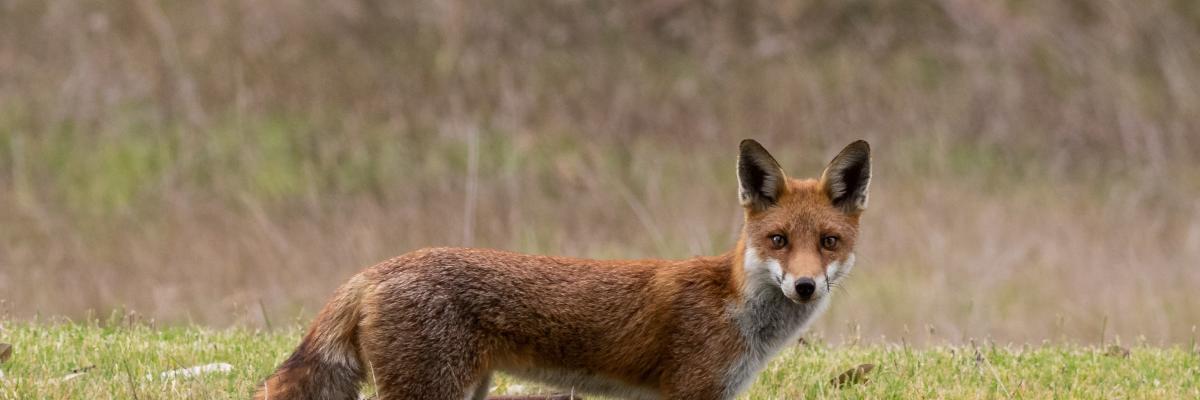Cats and Dogs
If you find an animal you suspect has been the victim of a cat or dog attack, contact the Wildcare Helpline on 9474 9055.
Cats
Whilst cats are beloved pets and great companions, they are also hunters, and their impact on Australian native fauna has resulted in their being a key threatening process to Australia`s biodiversity. Research indicates that Australia`s 3.7 million domestic cats kill 230 million native birds, mammals and reptiles each year.
Though many people believe their cats stay close to home, studies tracking cats using GPS trackers show that most domestic cats wander further from home than owners believe.
Cat owners can help protect native wildlife by keeping cats contained to their property, and by keeping them inside at night. Cats are most active at dawn and dusk, and venture further during the night than during the day.
Ideally cats should be kept indoors at all times, or confined to a secure outside enclosure.
Keeping your cat on your property not only protects wildlife it keeps your cat safe by reducing the chances of injury, car strike, attacks and diseases. On average, indoor cats live longer and healthier lives than those that are free to roam.
Under the Cat Act 2011 all cats over six months of age are required to be sterilised, microchipped and registered with your Local Government Authority.
Dogs
One of the biggest impacts domestic dogs have on native wildlife is disturbance when they are walked off leash or on long leads with minimal control. Dogs are curious by nature and are also instinctive hunters, this will lead them to chase birds and disturb or destroy the nests of ground nesting birds, particularly waterbirds when allowed to run through wetland and riparian vegetation.
Dogs are also known to injure or kill native animals, Bobtail Lizards in particular are admitted to wildlife shelters with dog bite injuries.
Responsible Dog Ownership
Only walk your dogs off leash in designated off leash areas, and ensure they are under effective control at all times which includes responding to commands, returns when called, remains a reasonable distance from you at all times, and does not behave in a threatening or aggressive manner to other people or animals.
For the safety of wildlife and your dogs they should not be permitted to enter waterbodies or surrounding vegetation, and they are to be prevented from causing damage to native flora and injury of native fauna. Always pick-up after your dog and dispose of waste in a bin.
Under the Dog Act 1976 all dogs over the age of three months of age are required to be microchipped and registered with your Local Government Authority.
https://www.gosnells.wa.gov.au/Your_property/Pets_and_animals
Invasive animals
Foxes
The Red Fox is a Declared Pest under the Biosecurity and Agriculture Management Act 2007. Foxes occur across most of the Australian mainland and are a significant contributor to the decline of many native animals, and cause economic losses to the agricultural industry, as well as personal loss to those who keep livestock, particularly poultry.
The home ranges of adult foxes may overlap with other foxes, and social groups form between a vixen and her cubs until they are around six months of age at which point they will begin to disperse, usually in early autumn.
Long-term control of foxes is difficult and needs a strategic coordinated approach between land managers as overlapping home ranges and dispersal of cubs results in areas where control is undertaken being quickly re-colonised by other foxes.
Whilst the City works with State Government Departments to undertake control of foxes within City reserves, it is the responsibility of the community to ensure domestic animals, such as chickens, are secured in appropriate pens to reduce the chance of predation.
Fish
Non-native fish such as Koi Carp, Goldfish, Cichlid species, and even Murray River Cod have been introduced to many wetlands and lakes in the City of Gosnells through illegal dumping. These non-native species pose a number of threats to local fauna through predation and direct competition for resources and have detrimental impact on ecosystem values and water quality.
Koi Carp and Goldfish -
Koi and well documented to cause habitat loss for native plants, fish, invertebrates and waterfowl. Koi and Goldfish are largely bottom feeders, sucking up sediment into theirs mouths and blowing out through their operculums. This leads to constant resuspension of nutrient rich sediments, increased water turbidity, and uprooting of aquatic plants which serve important ecosystem services such as up taking nutrients and adding oxygen to the water.
The resuspension of nutrients increases the risk of microalgae blooms ( including toxic algal blooms ), and the increased turbidity limits the amount of light reaching aquatic plants their ability to uptake nutrients and oxygenate the water, leading to poor water quality which negatively impacts native species.
Koi and Goldfish will also directly compete with native species for food resources , threaten native fish through the introduction of diseases and parasite, and predate on native fauna.
If you have fish you are no longer able to keep, below are some options for rehoming them:
- Pet stores and aquariums: most stores will accept unwanted fish ( contact them in advance to ensure they have tank space available )
- Koi Society of Western Australia : the Koi Society will take Koi Carp dropped off at partnering businesses, see website for details
- Give away to a friend or someone else looking for fish
Helpful links - Introduced Fish
https://www.koiclubwa.com/unwantedkoi.toy
